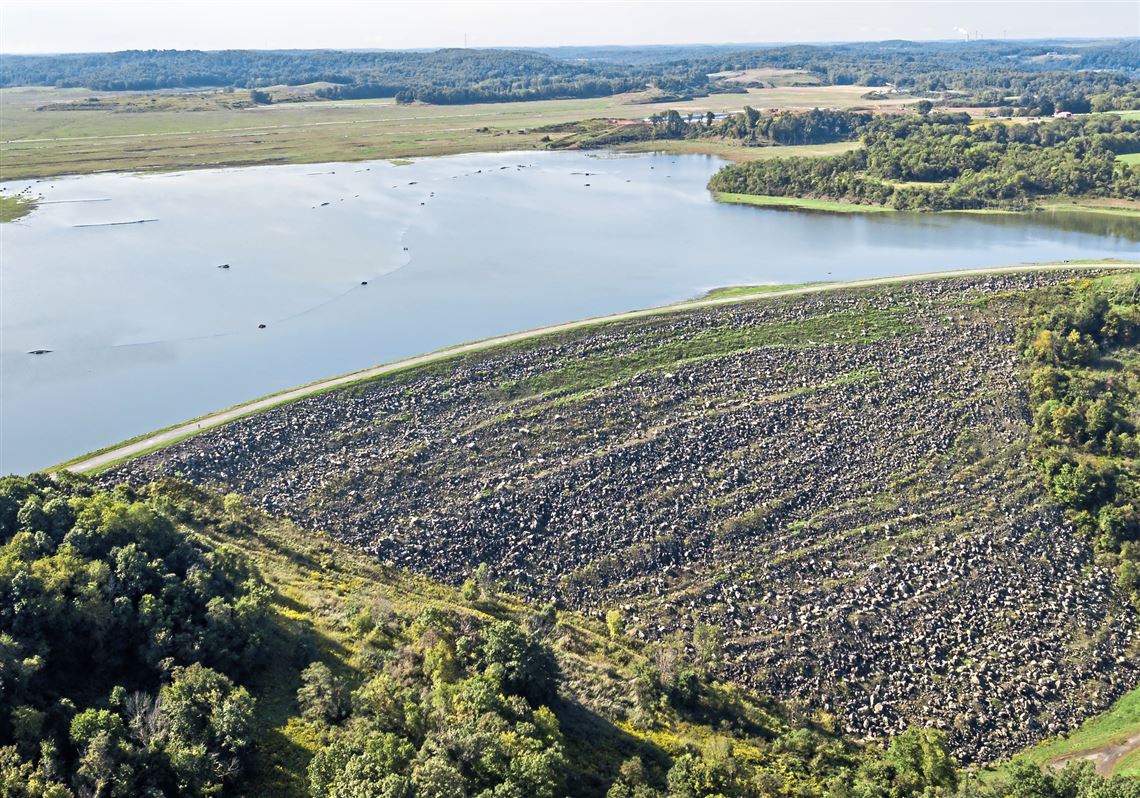Pentagon Request Could Boost Rare Earth Mining Industry in U.S.

By Diana Nelson Jones
July 15, 2019 - The rare earth mining industry in the United States — including the Appalachian coal industry -— could get a shot in the arm from the U.S. government’s interest in establishing a domestic production supply chain that now depends on China.
A Department of the Air Force request for information, under the Defense Production Act, seeks to determine the capacity and processing capabilities within the domestic industry. The U.S. currently imports almost all of the metal products made from rare earth minerals from China.

Little Blue Run, the nation's largest coal ash impoundment, in a Sept. 19, 2018, file photo in Lawrenceville, West Virginia. The site sprawls 955 acres in Beaver County and Hancock County, West Virginia.
Photo by Andrew Rush, Post-Gazette
Anthony Marchese, chairman of Texas Mineral Resources Corp., which will submit information, said China’s domination of this industry should cause alarm without trade tensions.
“You have to be concerned anytime materials are coming from a sole source,” he said. “The U.S. is taking steps to help American industry create a supply chain. This issue has been here for the last 10-15 years, and people finally are waking up.”
Mr. Marchese’s company announced earlier this year that it had produced “multiple high-purity and separated rare earth minerals from Pennsylvania coal mining waste material” at a 99% level.
Coal waste could be a significant source of rare earth minerals for metal production. Just one year ago, West Virginia University established a Rare Earth Extraction Facility at its Energy Institute to extract rare earth minerals from acid mine drainage.
Nobody from that facility could be reached Saturday.
Sarma Pisupati, director of the Center for Critical Minerals at Penn State University, has worked with Mr. Marchese’s company on extraction technology. He said his team has been characterizing Appalachian coal and associated products, including fly ash and mine drainage, for the past five years to determine the level of extraction possible.
“We get these rare earth and critical minerals from waste products. Even coal. We are going to take out only a small fraction,” he said. “We are able to extract about 90 percent of the rare earth contents.”
Rare earth minerals, of which there are 17, including scandium, cerium and terbium, are found in rocks, including coal and its waste. They are not made of earth and are not rare, but they are distributed evenly, not in rich veins, and they have to be separated out from what they are embedded in.
The potential for rare earth production growth is great in Pennsylvania and other parts of Appalachia, but that the work to date is “on a pilot scale, not at industrial level,” Mr. Pisupati said.
The potential depends in part on how much people want to pay to process the elements.
“These are unconventional resources,” he said, “but if the things we thought were waste could be used to build sustainable technology for the future, or energy, the computers we use, all the electronics, what else could we want?”
Mr. Marchese said this is the first time the Pentagon has ever tapped his industry for information.
The government’s interest is in defense, but a domestic supply chain would benefit almost every level of industry, he said.
“Take Apple. All of their products contain rare earth materials, so if you’re any industrial company, you have to be concerned about a sole source,” Mr. Marchese said.
The challenge for the United States is not to extract rare earth minerals but to increase the manufacture of metals from them.
“It has taken China 30 years to build a dominant position in the rare earth industry,” Mr. Marchese said. “We should want to become less dependent on China, but we’re not going to catch up in a year. You’ve got to start somewhere.
“There are four or five projects that would go a long way to satisfy whatever domestic materials we need. Given American ingenuity, I don’t think it will take 30 years to catch up.”

